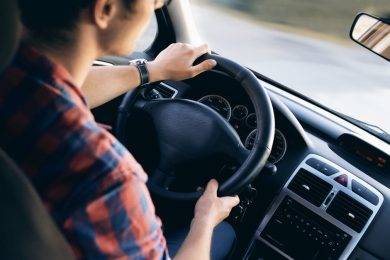We spend so much time behind the wheels of our automobiles that it’s simple to forget just how much risk we’re putting ourselves in just by getting on the open road.
Car accidents are far too common and the damage that results from them can be quite serious. These accidents are so common that it is actually likely each one of us will be in at least one during our lifetimes.
Practicing defense driving can help to lessen your chance of getting into a car accident. Practicing this form of driving can help keep your sharp on the road and can help make up for the less than stellar care of other drivers.
What are some defensive driving methods you should know about? Read on and we’ll walk you through everything that you need to know.
-
Always Stay Alert While Driving
It’s easy to get distracted when driving, especially if you’re on an open stretch of the road such as a highway for a long period of time. There are so many modern distractions that we have in our vehicles.
There’s the radio, navigation applications, our cell phones, and of course, the other passengers in our car. You might feel you just want to reach into your bag in the backseat and get something.
However, all of these distractions fly in the face of true defensive driving.
A driver that is performing at their best should always be scanning the horizon and looking out for anything that leads to trouble. The sooner you spot a problem, the more time you’ll have to react to it in an efficient manner.
If you’re distracted and looking away from the road, you might not see a hazard until it’s too late to make a move. That’s how an accident happens. Keeping your eyes on the road and looking out at elements up to thirty feet in front of you? That’s the way to ensure an accident won’t happen.
- Always Check Your Blind Spots
One of the most common causes of car accidents is when a car merges into another lane and hits another vehicle in the process. The reason this is common is that most vehicles have blind spots.
A vehicle coming up directly on your left or right might be so close to your vehicle that it no longer shows up in your mirrors. That renders it effectively invisible to your eye while driving, meaning you can easily hit it if you make a quick merge.
The way to avoid this problem is always to throw a quick cautious look over your shoulder and ensure there’s nothing in your blind spot before merging.
Yes, many modern vehicles have been equipped with technology that helps alter the driver if a vehicle has entered their blind spot area. Still, there’s nothing like the certainty that can arise from actually physically turning your head and checking.
As long as the close is clear, you can make your merge and continue driving without any incident.
You should keep this in mind when passing other vehicles as well. You don’t want to stay in someone else’s blind spot for too long, as they might not see you. It’s best to either fall back or move past the vehicle as soon as possible.
- Look for Reckless Drivers
Not all on the road will be as focused on safety and security as you. You can’t control the behavior and concerns of other people. Let’s face it: some people are just reckless and inconsiderate.
You need to keep an eye out for these kinds of drivers. When you can identify one, it’s important to move your vehicle as far away from them as possible. This kind of behavior can easily lead to accidents, and you don’t want to be nearby when it happens.
What kind of behavior indicates a dangerous driver? Someone who is going over the speed limit, for one. The driver might not be signaling at all and could be moving quickly from lane to lane.
They might just be swerving or braking erratically. They might not seem in total control of their vehicle. Whatever the matter may be, if you see red flag behavior from another driver on the road, you want to get as far away as possible from them.
- Maintain Proper Distance
As we discussed before, a lot of defensive driving is about allowing yourself proper reaction time. This is why we were against distracted driving.
Even if you have your eyes on the road at all times, you still need to take steps to ensure that you’ll have proper reaction time should something unfortunate occur. That means leaving a large, safe amount of distance between yourself and other vehicles.
Think of it this way: if you’re driving directly behind another vehicle, and that person has to brake suddenly, that gives you only a split second to also slam on the brakes yourself. More than likely, you’ll end up smashing into the vehicle in front of you.
You’re now in an accident, and worse, the accident will likely be found to be your fault. You’ll be on the hook for the damages and injures, and you’ll likely need to find an attorney and see what you can do. A whole mess.
All of this could be avoided by pulling back and giving yourself a much better possible reaction time.
One handy tool is to consider the time between yourself and the vehicle in front of you. How quickly after the vehicle in front of you do you pass a similar point in the road? You can use a landmark like a billboard to judge.
On a good weather day, you should be at least two seconds behind the vehicle in front of you. When the weather is worse, you might want to add even more distance than that.
This amount of room should give you enough time to properly react to anything that vehicle ends up doing. You should never trust anyone but yourself on the road, and keeping a skeptical distance between yourself and the person in front of you should help you stay in control.
- Slow Down and Stay Calm
The average person feels busier in the modern era than ever before in human history. There are places to go and things to see. Everyone’s in a rush.
Still, driving over the given speed limit is a good way to contribute to an accident occurring. Driving at an excessive speed actually can make it much more difficult to properly handle your vehicle.
It will limit the reaction time that we discussed and bring you physically towards potential danger at a much quicker rate.
The speed limit at your location is at the number it is for a reason. It is based on a variety of factors, including road conditions and weather in that area. Going over the posted limit is undeniably dangerous. Keeping a slower speed will be better for your overall safety.
You also need to ensure you’re calm behind the wheel. Often, people speed because they’re stressed about getting somewhere on time.
This stress can be its own kind of problem. When you’re stressed out, your mind is not working at it’s best. Your reflexes aren’t as acute as they should be and you might be more prone to reckless or distracting behaviors.
The bottom line is that your mind won’t be on the road. This is far from ideal! If you wanted to be an invested defensive driver, you need to take a step back and calm down before getting behind the wheel of a vehicle.
- Don’t Drink and Drive
This one should be obvious but we’re going to point it out anyway! The last thing you should ever do is get behind the wheel of an automobile after drinking. Drinking can greatly dull your sense and put yourself and all other drivers on the road in serious danger.
Remember, driving under the influence of drugs or with a blood alcohol concentration higher than .08 is illegal. Even if you don’t’ cause a serious accident, getting caught behind the wheel after drinking more can leave you facing serious legal consequences.
If you’ve been drinking and need to get home, it’s better to call a can or rely on a friend than to get behind the wheel and drive.
Defensive Driving Tips and Tricks
If you want to avoid getting into an accident on the open road, it’s important to practice defensive driving. The above defensive driving methods and tips can help to ensure you keep yourself and other drivers as safe as possible.
Need more general advice for the road? Keep scrolling our blog for more.











